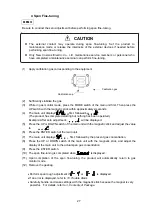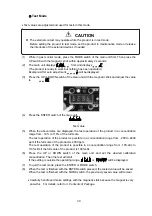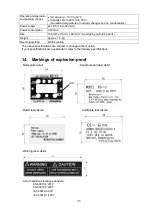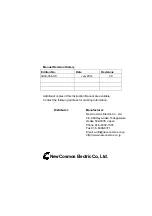
38
17. Glossary
Indicator / Alarm unit:
A unit that receives signals from the gas detector and indicates
gas concentration and alarms.
Detector:
A unit that detects gas concentration and converts it to electric
signals.
Backup power source device:
A device that supplies power to the gas detector,
indicator / alarm unit in order to maintain its performance during
a power failure.
Flow meter:
A meter to measure air flow in gas sampling pipe.
Gas collector:
A gas collecting probe that enhances gas collection efficiency
and blocks water and dust.
Diffusion type:
A method to detect gas by utilizing convection and diffusion of
gas.
Explosion proof construction:
A totally enclosed structure. When an explosive gas
explodes in a container, the container can resist the pressure
and prevent the ignition of explosive gases outside of it.
Preset alarm value:
A preset value for the alarm to go off when gas concentration
reaches a certain value.
Gas to be detected:
Gas that is detected and indicated which sets off an alarm.
Detection range:
Range of gas’s concentration that can be indicated and set off
an alarm.
Alarm accuracy:
Difference between the preset alarm value and gas
concentration when an alarm actually occurs or as the
percentage of the difference compared to the preset alarm
value.
Response time:
Time it takes from when the gas detector is exposed to a gas
with a concentration higher (lower) than the preset alarm value
until an alarm goes off.
Temperature range:
Range of temperature where the equipment can perform its
functions.
Maintenance and inspections:
Work to guarantee that the equipment perform its
required functions.
Calibration gas:
Gas used to calibrate scales of the equipment.
Peak hold:
A function to constantly update and hold the peak value of input
signals.
Summary of Contents for KD-12B
Page 43: ...40 ...




































